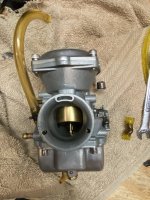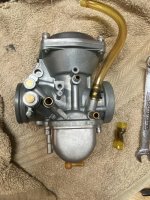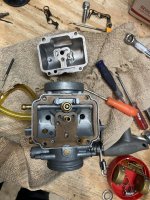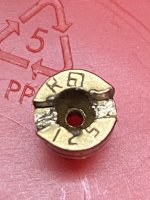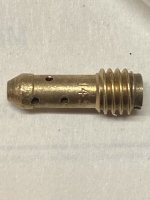So today I spent some time buttoning up some loose ends. Tightening fasteners, making sure everything is ready to ride. I also made sure I was getting a good ground on the top motor mounts. Used the dremel to clean off the powder coating and ran a separate ground wire to the coils. The coil mount is the Home Depot grounding clamp, but I am unsure it is actually getting grounded through the powder coating. I was also out in my storage shed when I saw my levers on my eternal tracker project and thought those might look nice on my 75. They came in a box of spare parts from an old Yam ty250.

They were a direct bolt on part and mated perfectly to my stock controls. They have a more aggressive look to them. They were very raw finish, but a few minutes with some Blue Magic and they shined right up.

After all this I gave the bike a nice bath, and since it’s a beautiful day I took her out for a short maiden test ride to a few local spots I had scouted for some potential calendar photo shots. She still has an intermittent miss on the right cylinder, but runs well under acceleration. Almost felt like an intake leak, but once I got home I checked with brake cleaner but no indication of leaks. Weather is beautiful here this weekend. Sunny and mid 60’s. I love it. Hope to get a few more miles on her and work out some bugs. Overall I am pretty happy with the way it rides, other than that miss issue and a rear brake that needs some attention.

They were a direct bolt on part and mated perfectly to my stock controls. They have a more aggressive look to them. They were very raw finish, but a few minutes with some Blue Magic and they shined right up.
After all this I gave the bike a nice bath, and since it’s a beautiful day I took her out for a short maiden test ride to a few local spots I had scouted for some potential calendar photo shots. She still has an intermittent miss on the right cylinder, but runs well under acceleration. Almost felt like an intake leak, but once I got home I checked with brake cleaner but no indication of leaks. Weather is beautiful here this weekend. Sunny and mid 60’s. I love it. Hope to get a few more miles on her and work out some bugs. Overall I am pretty happy with the way it rides, other than that miss issue and a rear brake that needs some attention.

